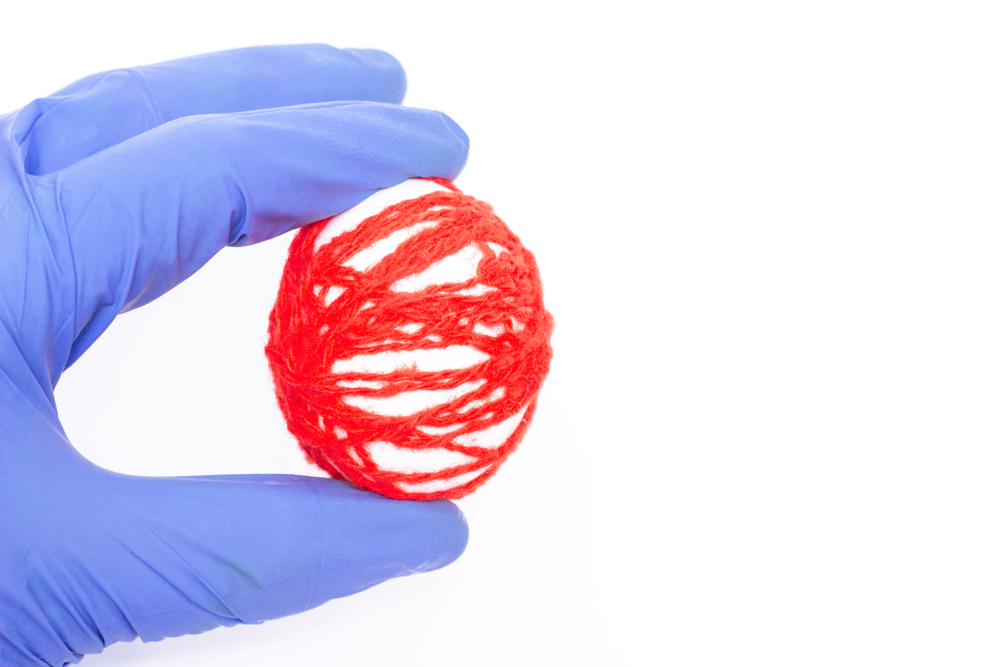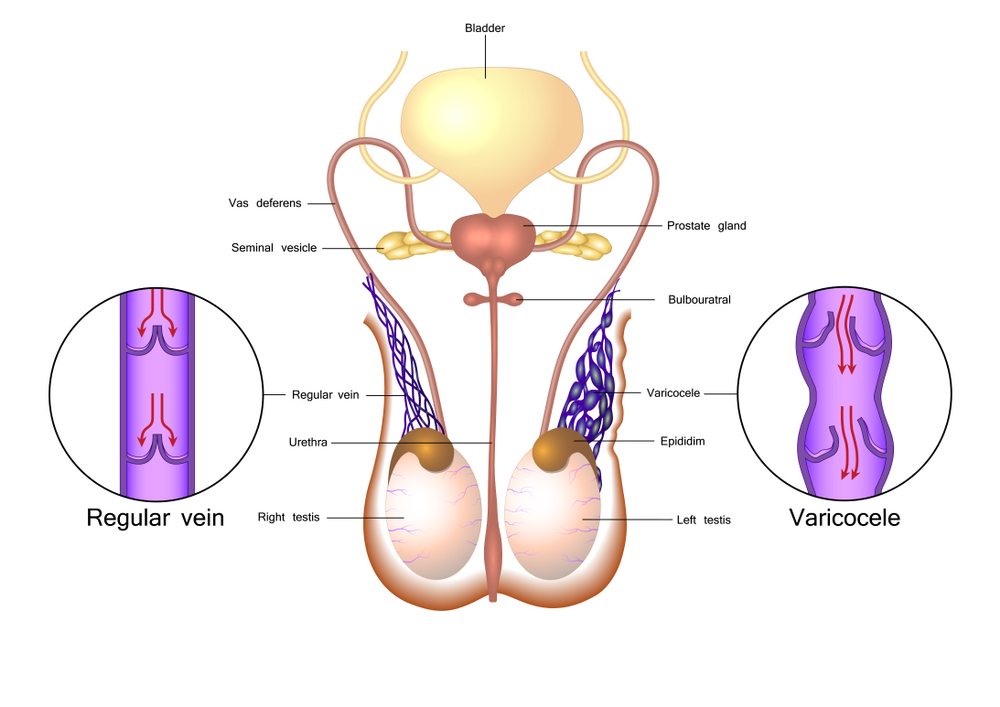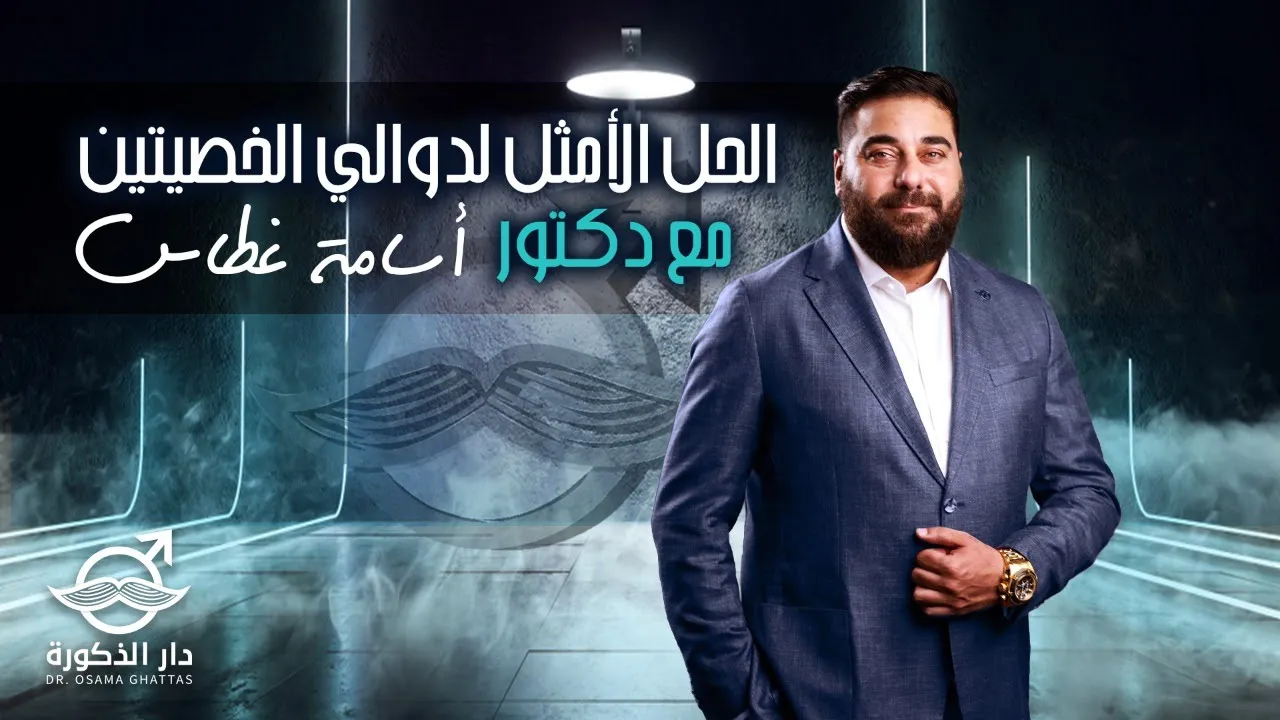Varicocele Surgeries and Treatment
What are Varicoceles?
A varicocele is a swollen vein in the scrotum that results from abnormal blood flow in the vein leading to its congestion.
They greatly resemble varicose veins that affect lower limbs. They form during puberty and can be on both sides of the scrotum but mainly on the left side.
It affects teenagers the most and they should be treated early before any serious complications occur.


Varicocele Symptoms
Varicoceles may not be accompanied by pain but its main manifestations are:
- Scrotal pain due to increased congestion of venous blood
- Discomfort
- Testicular atrophy
- Pain during physical excretion or standing
- Sensation of a painless mass on testicles
Varicoceles may lead to decreased Testosterone levels in the body resulting in:
- Decreased libido
- Poor concentration
- Depression and low moods
Causes of Varicocele
There are no definitive causes for Varicoceles but there are suggestions it may be caused by damaged vein valves resulting in regurgitation and congestion of blood.
Some daily habits are considered leading factors for varicoceles such as weight lifting, prolonged standing and chronic cough or constipation.
One of the most leading causes in Egypt and the middle east is ungratified sexual excitement which leads to blood congestion in veins resulting in their expansion and swelling.
Varicocele Diagnosis
It usually starts with a physical examination to assess the testes for pain.
Some imaging investigation may be required like scrotal ultrasound to assess the cause of the swelling.
Varicoceles are categorized into three degrees. This classification is based on testicular size where one means small testicles and three is the largest.
Varicoceles and Reproduction
Varicoceles may affect reproduction because of the decreased production of sperms resulting from higher testicular temperature. This is more common in the left testicle but can affect both testicles as well.
Varicoceles in young adults
Varicoceles are very common in young adults where it mainly affects the left testicle
They may cause pain especially during physical exertion as the increase in blood pressure expands the varicoceles
It is not a dangerous condition but it may harm sperm production. Thus, a sperm count is usually required.
If the result is a low sperm count, a minor corrective surgery is recommended.
Varicoceles and erectile dysfunction
There are some effects of varicoceles that may lead to decreased male fertility and reproduction.
This varies according to the varicocele degree. Some people with first degree varicoceles have normal fertility and sperm count and some may face fertility and sperm mobility issues.
Some studies indicate that varicoceles may cause decrease in the level of androgen resulting in erectile dysfunction This condition resolves as the varicoceles are treated.
complications of varicoceles
There are some possible complications to varicoceles like:
- Fertility issues: varicoceles may cause decreased sperm count and quality and some cases may result in infertility
- As varicoceles are mainly formed during puberty and are mainly located in the left testicle, they may result in atrophy of the left testicle
Varicoceles and testicular atrophy
Testicular atrophy or shrinking is a sign of acute varicoceles and needs critical surgical intervention.
This is essential for preserving sperm quality and fertility but it is not definitive for regaining the size of the affected testicle.
Varicocele Treatment
Some cases may not need a treatment. Treatments are prescribed based on symptoms ranging from discomfort and pain to fertility issuesفهناك طرق مختلفة There are different treatments to varicoceles that result in complete remission of the case and its complications.
Open Varicocelectomy
This is the most common type of varicocelectomy. The varicocele is removed via an incision in the abdomen or the inguinal canal using Doppler to decrease the chances of possible complications .
Laparoscopic Varicocelectomy
A tiny camera (laparoscope) is inserted via a very small incision to reach and remove congested and swollen veins.
Percutaneous Embolization
A small catheter is inserted in a neck (jugular) or a thigh (femoral) vein and a coil is inserted through the catheter and into the varicocele to occlude it and prevent blood reaching the affected veins.
Varicocelectomy Complications
There is a very low chance of occurrence of any complication to varicocelectomy but if any of these symptoms occur, medical help must be sought immediately:
- Fever
- Nausea
- Scrotal inflammation
- Scrotal swelling
- Difficulty in urination or bladder evacuation
- Lower limb edema (Swelling)
Tips after the surgery
Some instructions must be followed after the surgery to achieve rapid and full recovery:
- Adhere to the doctor’s instructions and take medication and antibiotics on time
- Complete rest and no workout, sports or physical exertion
- Avoiding intercourse during the recovery period
- Laxatives are given under supervision of a doctor to avoid constipation
Varicocele Treatment in Dar Elzokora
At arrival, the patient goes through 4 stages :
The First stage: an assistant physician takes a comprehensive history of the patient including any chronic diseases or previous operations which helps achieve a sound diagnosis and a suitable treatment.
The Second Stage: a specialist lists all the required appropriate laboratory and radiological investigations to identify the cause of the problem .
The third step: history and investigations are reviewed to reach an accurate diagnosis, then a treatment protocol is prescribed or surgery is indicated all under the supervision of Andrology surgeries expert Dr. Osama Ghattas.
The fourth stage: a pharmacist gives instructions on the proper use of the prescribed medications and how it can be used with any current medications like Hypertension or Diabetes treatments.
This is followed by continuous follow up till the symptoms are relived and the patient achieves full recovery.
Send A Message
Contact Us
Alexandria
Canary Tower – Gihan Circle – Gamal Abdel Nasser Street – Miami.
El Gehaz El Markazi Lelmohasbat building, 1st floor – Mohammed Fawzi Moaz street – Smouha.
Cairo
Fifth Settlement:
90th Street – CMC Mall – In front of Al-Nassam Hospital.
Sheikh Zayed:
Beverly Hills – Al Nada Clinics, Clinic No. 212, second floor – next to Al Nada Hospital.
Mansoura
Intersection of Banque Misr St. with the new railway under Al-Mawji Radiology.

